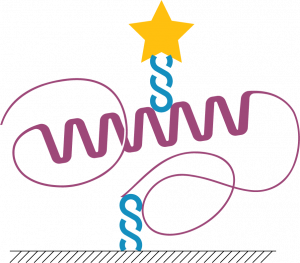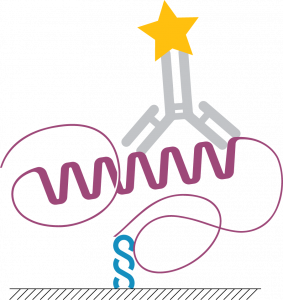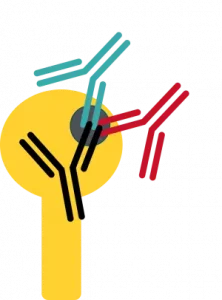Finding the right affinity ligand pair is a bottleneck in immunoassay development where the Optimer platform can help.
Whether you need an additional reagent to form an aptamer-antibody pair or a complete new aptamer-aptamer pair, we can configure the Optimer discovery process to support you.


Standard proteins and affinity ligands form the critical reagents for IVD assays such as ELISA and lateral flow assays, but discovering affinity ligands that work well as pairs can be challenging.
The antibody pair problem
While you may already have a commercial antibody that works for your protein target, this may not perform well as part of a matched pair. This is especially true for novel biomarkers or less popular biomarkers where the range of well-performing commercial antibodies is limited.
Most antigens present epitope dominance, where some of the epitopes are more immunogenic or are simpler to develop antibodies against, leaving other epitopes to which fewer functional antibodies are available.
When screening for antibodies to such antigens, many of the available clones on the market are targeted to the same epitopes or epitopes that are very close together. For antibody pair development this presents issues of steric hindrance. The binding of one antibody leaves no space for the second antibody to bind, effectively blocking their function as a matched pair for your protein.

This is just one of the reasons many antibody pairs do not work.
Both sourcing commercially available antibody pairs and creating custom antibody pairs are risky. Extensive time and cost can be expended to purchase and validate antibodies for pairing, with no guarantee they will work in your end application.
Conventional monoclonal technologies are not optimized for generating antibody pairs and suffer from the immunodominance described above. This means that beyond trying to pair commercially available antibodies, custom antibody generation is also risky.


